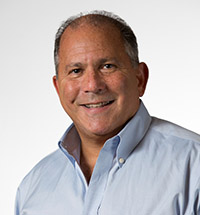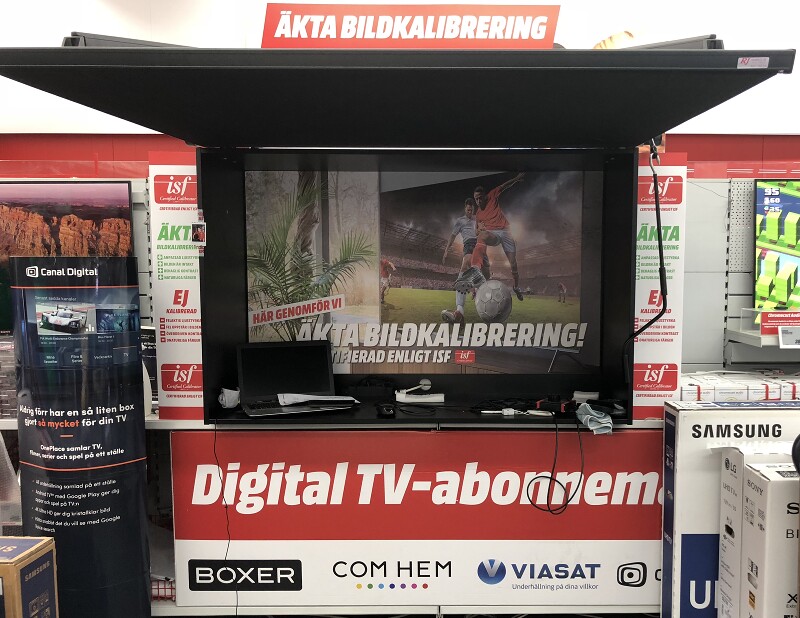In recent years, the display industry’s technology and color science has enabled extensive opportunities for channels to optimize the consumer experience.

Major Retailers including MediaMarkt and independent professional color calibrators worldwide are now embracing the opportunities that are emerging as a result of the vast improvements in display technology. Let’s talk about how displays have evolved.
Resolution has vastly improved along with refresh rates and this has providing superior image sharpness. However, one of the most significant and visibly evident changes that is occurring concerns color enhancement. In this article, I want to focus on color advancements and how this benefits our industry and the consumer.
Today, the display industry and premium OEM products technology are providing color fidelity and saturation close to the visual capacity of the human eye. Once they had been defined back in 1931, the CIE 1931 color spaces were the first defined quantitative links between distributions of wavelengths in the electromagnetic visible spectrum, and physiologically perceived colors in human color vision.
For all these years, PC’s and TV’s, regardless of display device technologies (LCD, Plasma, OLED and CRT) legacy devices provided far less color range than a human eye’s vision capability. As a result, displays were not able to provide an immersive color experience compared to what the human eye could see naturally in its day to day viewing. Now a new era is upon us with panel technology providing not only increased sharpness but also far more color with HDR and wide color gamut (WCG). Although we are not yet reaching 100% of the human color vision capabilities, we are closer than ever before.
Today, HDR hardware is finally being produced in high volume and I expect significant sales volumes this holiday season. The core issue now shifts to what content will be available and how will consumers be able to see this great color improvement?
OK, so the consumer now has these great displays with color enhancement unlike ever before and they are inspired to see improved content. So where and what is the status of content that will be able to show these improvements? Currently, most of the major motion picture studios, game makers and most new productions are being produced and mastered to address this growing HDR display-capable installed base. Live broadcast is still lagging behind and we expect this to change slowly as a result of bandwidth limitations. Today the best option for viewing HDR Content is from 4K UHD Blu-ray players and associated 4K UHD Blu-ray discs. Most new Netflx and Amazon productions are being produced and streamed in 4k and HDR.

All this is great but how can the consumer be assured that the display purchased today is accurate and provides the optimal viewing experience that the artist intended? Since the inception of the display industry a top challenge needing to be addressed was how to ensure that the creator’s art is viewed as intended. Movie theatre operators and those with other highly controlled environments spend a lot of money and time tuning their projectors and delivering image accuracy. A huge amount of hard work and a lot of technology goes into film making, from production, creation and editing to the delivery of content that can be accurately viewed in theatres. Now consumer TV’s and monitors can compete by delivering a theatre-like experience in the home.
There are choices in TV Purchase
Todays consumers have a choice of where and how they purchase display technologies. However although the product may appear to be the same no matter where you purchase, the value of tuning and calibration services ensuring the display being optimized for picture quality accuracy is absent when you just get a box from an online retailer.
A significant example of how this value added service can be delivered to ensure that a display has been accurately checked and calibrated is taking place in Sweden. MediaMarkt has recognized that not only can they sell a product at a highly competitive price but they can assure the consumer’s ultimate satisfaction with the image on the display. How do they do this?
I had the opportunity first hand to travel to Sweden and visit the MediaMarkt headquarters as well as visiting some of their large retail outlets. The purpose of my visit was to learn further not only how Media Markt was selling high volumes of LCD TVs but what they’re doing to ensure the best possible consumer satisfaction and confidence in their purchase.
Each store had a kiosk set up to demonstrate the before and after view of a TV that was uncalibrated vs one that was. This visual demo had two displays sitting side by side showing obvious improvement on the calibrated display. In the same area there was a separate kiosk demonstrating live TV calibration. In MediaMarkt Sweden, all 26 stores benefited by selling calibration on a very high percentage TV’s being sold.

It became an easy decision for the consumer to purchase calibration after seeing the improvements achieved. Further, the firm understood that, at the time of purchase, the consumer does not want to be delayed for a lengthy calibration. In anticipation that the consumer would decide on calibration, a majority of the pre-packaged inventory is ready to go on demand with a certificate demonstrating the improved result.
A service commitment of this level in the past was a risk, but to date has proven highly successful. Media Markt has shown that although the products they sell from the leading global brands are great as shipped from the factory, the final improvement their making can garner tremendous customer satisfaction. Of course, the technology now available to assist in the calibration process made this quick and enabled a profit on the service as well as providing a differentiation from the same sets sold by online retailers. The technology that was in the sets to help with calibration was from Portrait Displays, where I was co-CEO at the time. – Martin Fishman
Until this year, Martin Fishman was Co-C.E.O. and Board Member of Portrait Displays, leading the company’s worldwide sales, marketing, and other cross disciplines. From 1997 to 2000, Fishman was E.V.P. Worldwide Sales and Marketing for Castlewood Systems where he managed sales, marketing, operations, support, and strategic direction. During his tenure, he successfully grew sales from start-up mode to over $200 million run rate in two years.
Prior to that, he was employed by Merisel and its subsidiaries where he held various executive management positions including President of Computerland Corporation, Managing Director of Merisel Switzerland, and Vice President and General Manager of MacAmerica. From 1992 to 1993 Fishman was VP of Sales and General Manager for E-Machines, a third-party Apple display company.
Mr. Fishman holds a B.S. Degree in Business and Marketing from Boston University. In addition, he is a member of the American Management Association (AMA) and has been a public speaker at industry forums. You can contact him at [email protected] or via LinkedIn.

